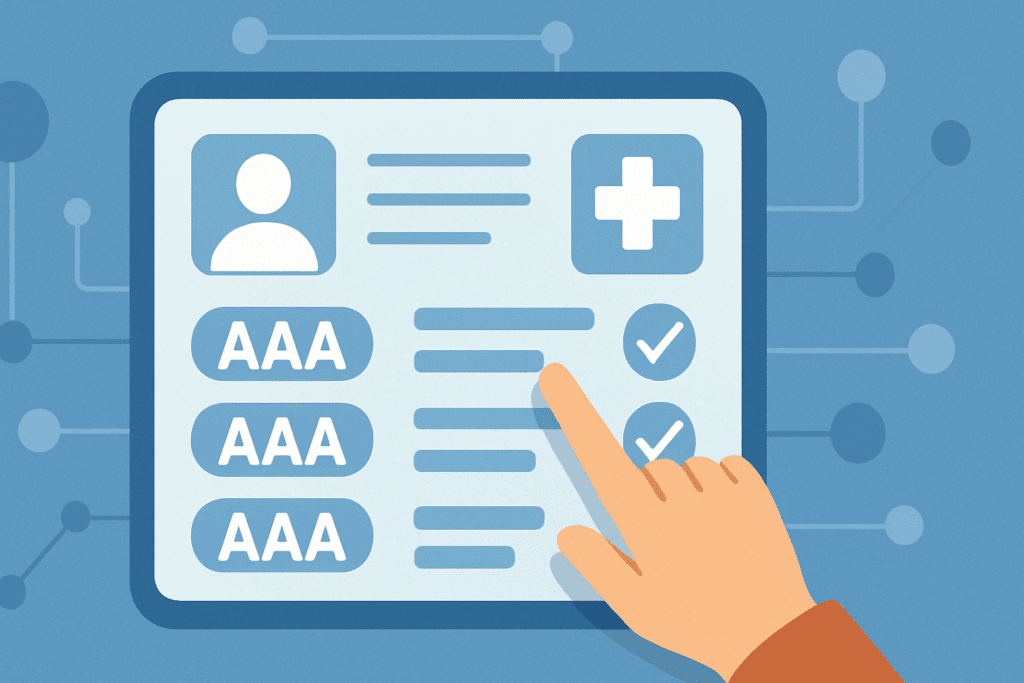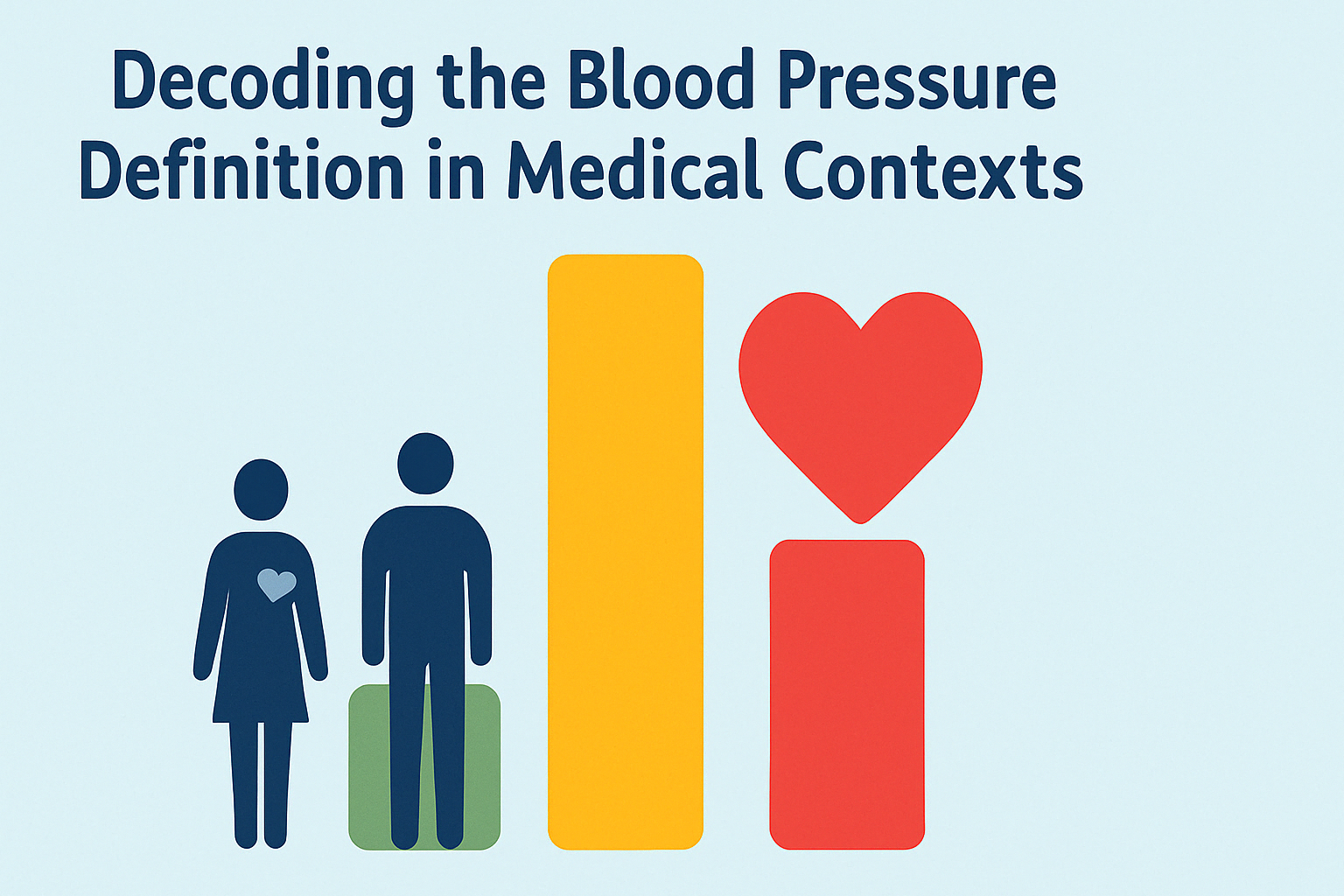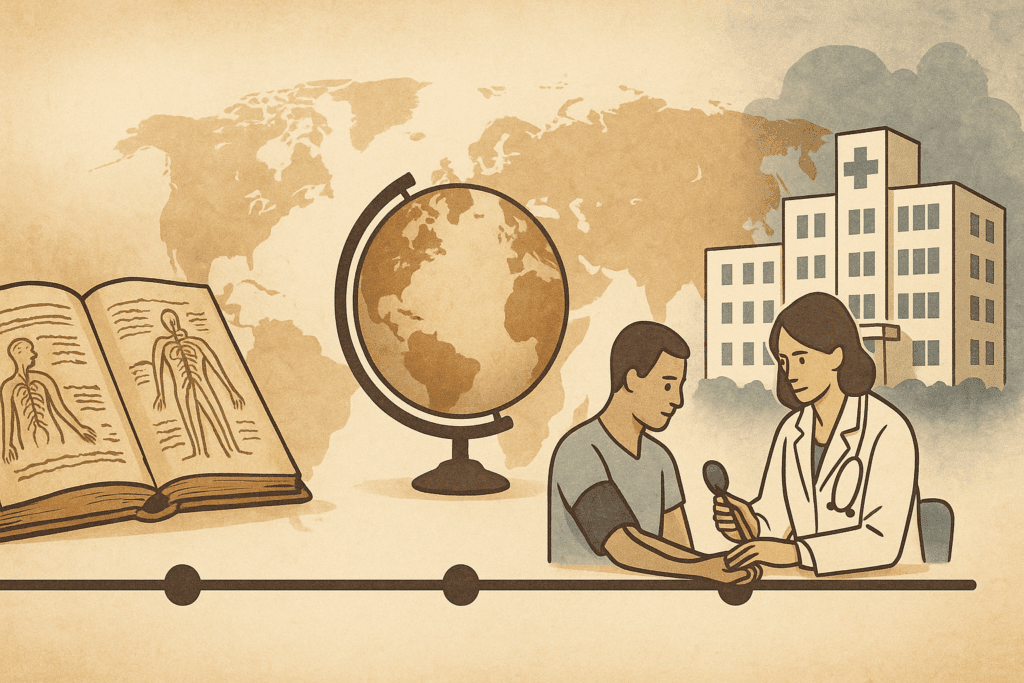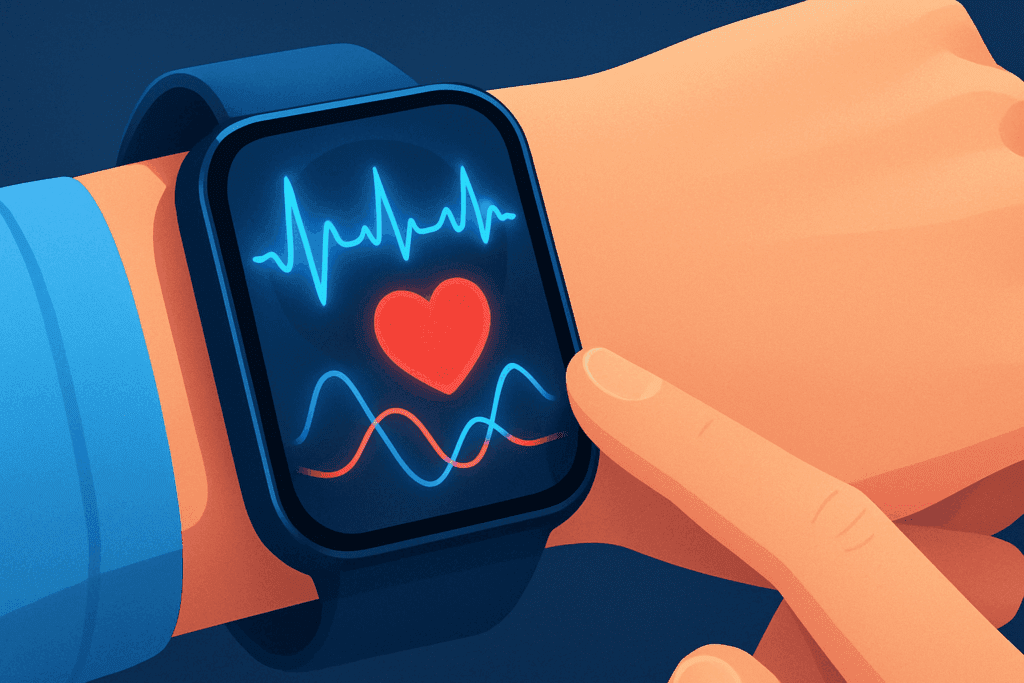High blood pressure, often described as the “silent killer,” remains one of the most pervasive and persistent threats to global cardiovascular health. Despite its prevalence, there remains a surprising amount of confusion around terminology, especially among those newly diagnosed or seeking to deepen their understanding of this condition. As medical literacy continues to evolve in parallel with advances in clinical care, it becomes increasingly important for patients and healthcare professionals alike to grasp the various terms used to describe high blood pressure. Exploring another term for high blood pressure, understanding related acronyms, and clarifying the blood pressure definition in medical terms all serve not only to enrich comprehension but also to empower more proactive, informed decision-making in the realm of heart health.
You may also like: Sudden Spikes in Blood Pressure: What Can Cause a Sudden Increase and When to Seek Medical Attention
The Importance of Language in Cardiovascular Health
In medicine, language is more than a vehicle for communication; it is a vital tool for precision, clarity, and empathy. This is particularly true in cardiovascular care, where nuanced differences in terminology can influence both perception and treatment. When discussing high blood pressure, patients may encounter interchangeable terms that include hypertension, elevated blood pressure, and systemic arterial pressure. Knowing that these phrases often point to the same underlying pathology allows for a more unified understanding of the condition and mitigates confusion during medical consultations. For example, understanding that “hypertension” is essentially another word for high blood pressure reinforces the medical validity of the term while bridging the gap between lay and clinical language.

What Is High Blood Pressure? A Medical Definition
To understand what another term for high blood pressure really means, it is essential first to grasp the blood pressure definition in medical terms. Blood pressure is the force that circulating blood exerts on the walls of the arteries as the heart pumps it throughout the body. This pressure is measured in millimeters of mercury (mm Hg) and is expressed using two numbers: systolic (the top number, indicating pressure when the heart beats) and diastolic (the bottom number, indicating pressure when the heart rests between beats). According to guidelines from the American Heart Association and the World Health Organization, a normal blood pressure reading typically hovers around 120/80 mm Hg. Readings consistently above this level are considered elevated, and sustained elevations fall under the classification of hypertension.

Understanding the High Blood Pressure Acronym: What Does It Stand For?
In clinical documentation and everyday medical discussions, abbreviations are frequently used to enhance efficiency. The high blood pressure acronym most commonly encountered is “HTN,” which stands for hypertension. While brief, this acronym encapsulates a complex physiological phenomenon and is used ubiquitously in patient charts, prescriptions, and research papers. Recognizing HTN as a high blood pressure acronym not only supports clearer communication between clinicians but also helps patients better navigate their medical records and discussions. This understanding fosters a sense of agency and minimizes the intimidation often associated with medical jargon.
Exploring Another Word for High Blood Pressure: Terminology Variations
The medical field often employs various phrases to describe the same condition, depending on the context. Another word for high blood pressure that frequently appears in literature and consultations is “hypertension.” This term is derived from the Greek words “hyper,” meaning over or excessive, and “tension,” which relates to pressure. Understanding what is another word for hypertension and how it functions interchangeably with high blood pressure helps to demystify the condition. Other synonymous phrases include “elevated arterial pressure” and “systemic hypertension.” Each term reflects a slightly different emphasis, but all refer to the same underlying health concern: chronically increased pressure within the arterial walls that can lead to significant cardiovascular complications if left unmanaged.
Why Knowing Another Term for Hypertension Matters in Medical Communication
In a clinical setting, understanding what is another term for hypertension can make a meaningful difference in how patients interpret medical advice and adhere to treatment protocols. For instance, a patient may hear a provider mention that their “arterial pressure is elevated” without realizing that this is simply another term for high blood pressure. Such misunderstandings, while seemingly minor, can lead to delays in care or lapses in compliance. When healthcare providers take the time to clarify that terms like hypertension, elevated blood pressure, or high arterial tension all signify the same diagnosis, patients are better equipped to take ownership of their health. This is especially critical in chronic disease management, where lifestyle changes and medication adherence are central to successful outcomes.

How Blood Pressure Is Consistent in Arteries and in Veins: Debunking Misconceptions
One common misconception in public understanding is the belief that blood pressure levels are uniform throughout the entire circulatory system. While blood pressure is measured in the arteries due to their proximity to the heart and their role in delivering oxygen-rich blood, some may mistakenly think that blood pressure is consistent in arteries and in veins. In truth, arterial blood pressure is significantly higher because it reflects the force exerted by the heart’s contractions. Venous pressure, on the other hand, is much lower as it involves the return of deoxygenated blood to the heart. Clarifying this physiological difference is crucial when discussing how blood pressure is measured and why readings focus on arterial values. By dispelling myths and emphasizing medical accuracy, patients gain a more accurate understanding of their cardiovascular health.

Decoding the Blood Pressure Definition in Medical Contexts
A precise blood pressure definition in medical literature distinguishes between normal, elevated, and hypertensive states based on empirical data and risk stratification. Clinically, the term encompasses more than a simple numerical reading. It includes the relationship between cardiac output, vascular resistance, and arterial elasticity. For instance, two individuals with identical readings may experience different cardiovascular outcomes based on age, comorbidities, and underlying causes such as kidney dysfunction or hormonal imbalance. This complexity underscores the need for a more nuanced understanding of the word for high blood pressure. When clinicians refer to hypertension, they are acknowledging a constellation of risk factors and physiological responses rather than just high numbers on a cuff.

Another Word for Blood Pressure in Historical and Global Medical Contexts
Medical terminology is not static; it evolves over time and across cultures. Another word for blood pressure might vary depending on the linguistic or historical context. In older medical texts, phrases such as “vascular tension” or “circulatory force” were often used. In modern international contexts, translations of the concept into other languages may retain unique idioms or interpretations. For multilingual patients and practitioners, awareness of these differences is essential. Knowing that the term hypertension may translate differently across languages, but retains the same physiological meaning, aids in building cross-cultural health literacy and inclusivity in care. It also illustrates how the fundamental principles of cardiovascular physiology transcend linguistic boundaries.
Clinical Implications of Elevated Blood Pressure and Its Synonyms
Regardless of the terminology used—whether one refers to hypertension, high blood pressure, or elevated arterial pressure—the clinical implications remain the same. Chronically high pressure within the arteries damages the endothelial lining, increases the risk of atherosclerosis, and places undue strain on the heart. Over time, these effects can culminate in stroke, myocardial infarction, heart failure, and renal impairment. Understanding that another word for high blood pressure conveys the same level of medical urgency is critical. Patients and clinicians alike must treat every reference to elevated pressure as a red flag requiring sustained intervention. Early diagnosis and appropriate terminology education can significantly enhance outcomes through timely lifestyle modification and pharmaceutical management.
Navigating Medical Records: Recognizing Hypertension Acronyms and Synonyms
For patients managing chronic conditions, the ability to navigate and interpret their own medical records is an invaluable skill. Recognizing common acronyms like HTN and being able to connect them with terms such as hypertension or high blood pressure improves transparency and facilitates informed discussions during appointments. It also prevents miscommunication when encountering new providers or interpreting discharge summaries and laboratory reports. Medical professionals can support this literacy by proactively explaining that HTN is the standard high blood pressure acronym and ensuring that documentation includes both the acronym and the full term at least once for clarity. Empowering patients in this way enhances trust and engagement.

The Role of Technology and Apps in Understanding Blood Pressure Terminology
Digital health tools and mobile applications have revolutionized how individuals track and manage their cardiovascular health. These platforms often display readings, trends, and terminology that mirror clinical language, including the use of the high blood pressure acronym or references to hypertension. By incorporating explanations and educational prompts within these apps, developers can bridge the gap between medical professionals and lay users. This not only reinforces the understanding of another word for high blood pressure but also encourages consistent monitoring and better long-term management. As technology continues to evolve, its role in standardizing and clarifying terminology will become even more central to public health literacy.
Educational Outreach: Teaching the Blood Pressure Definition in Medical Schools and Public Health Campaigns
Medical and nursing education programs devote substantial time to defining and contextualizing terms like blood pressure, hypertension, and related acronyms. However, public health outreach must also emphasize these definitions to ensure community-wide comprehension. Campaigns aimed at increasing awareness about cardiovascular risk should not assume that all individuals understand the blood pressure definition in medical terms. Instead, they should provide clear, jargon-free explanations that demystify concepts while reinforcing the importance of regular monitoring. When people can confidently articulate what is another term for hypertension and understand the implications, they are more likely to seek screening and comply with recommended care.
How Terminology Affects Health Outcomes and Health Equity
The way health information is communicated has profound implications for equity and access. Individuals with lower health literacy, non-native English speakers, or those unfamiliar with medical terminology may struggle to understand what a diagnosis of hypertension entails. When providers use synonyms like another word for blood pressure or rely heavily on acronyms without explanation, they risk alienating or confusing patients. By normalizing clear, inclusive language and offering translations or analogies when needed, the medical community can ensure that all patients—regardless of background—receive accurate, comprehensible information. This not only supports better individual outcomes but also contributes to a more equitable healthcare system overall.
Reframing Hypertension as a Manageable Chronic Condition
Understanding the spectrum of terminology associated with high blood pressure contributes to a larger goal: reframing the condition as both serious and manageable. Whether referred to as hypertension, elevated arterial pressure, or systemic vascular resistance, the diagnosis does not have to be a life sentence. With proper understanding of the blood pressure definition in medical practice and recognition of the high blood pressure acronym HTN, patients can more readily accept the diagnosis and take appropriate steps. Educational efforts that reinforce this perspective—especially when delivered through consistent, easy-to-understand language—are instrumental in reducing fear and promoting long-term adherence to therapeutic regimens.
Frequently Asked Questions (FAQ): Advanced Insights on High Blood Pressure Terminology and Concepts
What are the cultural implications of using another term for high blood pressure in different healthcare settings?
In multicultural healthcare environments, using another term for high blood pressure can significantly impact communication and patient engagement. For example, in some non-English-speaking countries, the direct translation of hypertension may carry different connotations, either diminishing or exaggerating its seriousness. This becomes particularly relevant when health literacy is low, and terminology affects whether a patient perceives their condition as manageable or life-threatening. It is also common for clinicians to choose a culturally familiar word for high blood pressure to better align with local idioms or colloquial expressions. This approach not only improves comprehension but also enhances trust between the provider and patient, reinforcing the broader importance of language in public health outreach.
How does the high blood pressure acronym (HTN) influence electronic medical record systems and AI-driven diagnostics?
The high blood pressure acronym HTN is widely integrated into electronic health record (EHR) systems and serves as a standardized data point for AI-driven diagnostics and predictive modeling. Algorithms use this acronym to flag at-risk patients, recommend intervention protocols, and even forecast future cardiovascular events. However, problems arise when patients are unfamiliar with the acronym or when alternative spellings disrupt data accuracy. To mitigate these issues, advanced EHR systems now include synonym recognition, identifying another word for high blood pressure and linking it back to the core HTN diagnosis. This fusion of technology and standardized language supports continuity of care, especially for patients transferring between facilities or providers.
Why might patients misunderstand the phrase “blood pressure is consistent in arteries and in veins” and what does it really imply?
The idea that blood pressure is consistent in arteries and in veins is a common misconception, largely due to a lack of anatomical education in the general population. In truth, pressure in arteries is significantly higher because they are directly connected to the pumping action of the heart. Veins, which return deoxygenated blood to the heart, experience much lower pressure and operate under different physiological mechanisms such as valve-assisted flow. Misinterpreting this concept can lead patients to believe that a single blood pressure reading reflects the condition of the entire circulatory system, which is inaccurate. Educating patients about this distinction helps them understand why most medical readings focus exclusively on arterial pressure.
What strategies can improve patient understanding of another word for blood pressure during clinical consultations?
To improve comprehension, clinicians can use visual aids, analogies, and culturally relevant language when introducing another word for blood pressure. For instance, comparing blood pressure to the force of water in a hose can help patients grasp the importance of vascular resistance and flow dynamics. Providing multilingual resources that offer another term for hypertension in a patient’s native language is also effective. These methods bridge knowledge gaps and reduce the likelihood of misinterpretation. Ultimately, by tailoring the communication approach to the patient’s educational and cultural background, healthcare providers can significantly enhance patient outcomes and adherence to treatment.
Can the evolution of medical terminology help demystify what is another term for hypertension?
Yes, the historical evolution of medical terminology plays a pivotal role in clarifying what is another term for hypertension. Older terms like “hard pulse disease” or “vascular overpressure” once dominated literature and shaped early medical understanding. Modern terminology has shifted toward more standardized language, making it easier to teach, learn, and share across clinical borders. By revisiting these historical contexts, medical professionals can better explain why certain terms evolved and how they inform current practice. This understanding also gives patients a richer appreciation for the language of medicine, helping to reduce fear or stigma associated with the diagnosis.
How does the blood pressure definition in medical training differ from public health messaging?
In medical education, the blood pressure definition is taught with an emphasis on hemodynamics, resistance, and organ perfusion—concepts far more detailed than the simplified numbers used in public health campaigns. While the public is often told that 120/80 mm Hg is “normal,” clinicians learn to interpret this value in the context of age, ethnicity, comorbidities, and cardiovascular risk scores. The challenge arises when this discrepancy leads patients to misjudge their health status. For example, a mildly elevated number may not warrant treatment in one person but may be dangerous in another. Bridging this gap between clinical nuance and public messaging is essential, and doing so may involve explaining what another word for high blood pressure means within personalized care plans.
What role does psychological framing play when using another word for high blood pressure in patient education?
The psychological framing of medical language significantly affects how patients internalize their diagnosis. Using another word for high blood pressure, such as “vascular tension,” can either normalize or stigmatize the condition depending on context and tone. For some patients, clinical-sounding terminology like the high blood pressure acronym HTN may feel impersonal and daunting. In contrast, gentler language might lower anxiety but risk diminishing the perceived severity. Striking the right balance is key: clinicians must gauge patient readiness and tailor terminology to provide both clarity and reassurance. This emotionally intelligent approach strengthens the therapeutic alliance and enhances long-term management.
How can wearable health technology educate users about what is another term for hypertension?
Modern wearable devices, such as smartwatches and fitness bands, now include features that educate users on cardiovascular metrics in real time. These devices often include educational glossaries that explain what is another term for hypertension, converting clinical jargon into digestible insights. When a user receives an alert for elevated pressure, the app may offer definitions, behavior tips, or direct links to consult professionals. Such dynamic interaction reinforces learning and boosts health literacy, especially among tech-savvy users. Over time, consistent exposure to both standard and alternate terms fosters a more comprehensive understanding of cardiovascular risk.
Are there sociological impacts of how another word for high blood pressure is perceived in different communities?
Indeed, the perception of another word for high blood pressure can vary widely depending on cultural, socioeconomic, and educational factors. In some communities, terms like “the pressure” are colloquially understood and may be preferred over more clinical alternatives. However, this informal language can sometimes undermine the urgency of the condition, leading to delayed treatment or underestimation of risk. Conversely, over-medicalized language may alienate individuals who mistrust healthcare institutions. A sociologically aware approach—one that considers how another term for hypertension resonates within specific communities—can improve engagement, reduce disparities, and promote earlier intervention.
What future developments may change the way we use another term for hypertension in digital healthcare?
As digital healthcare platforms evolve, we can expect greater personalization in how terminology is presented to patients. Natural language processing (NLP) and AI could soon adapt educational content based on a user’s literacy level, automatically substituting another term for hypertension that best suits their understanding. Voice-enabled virtual assistants might explain the difference between a high blood pressure acronym and a formal diagnosis in user-friendly terms. Additionally, patient portals could feature interactive language trees that break down what another word for blood pressure means in various medical scenarios. These innovations will not only improve understanding but also create more inclusive digital health experiences across demographic lines.
Conclusion: Embracing Clarity in Cardiovascular Language for Better Heart Health
Clarity in medical communication is more than a matter of semantics—it can be a matter of life and death, particularly when addressing cardiovascular conditions. Understanding another term for high blood pressure, recognizing the high blood pressure acronym in clinical records, and knowing the blood pressure definition in medical contexts all play crucial roles in empowering individuals to take control of their heart health. When patients are equipped with this knowledge, they are less likely to be confused by varied terminology and more likely to take timely action. Furthermore, health professionals who prioritize language clarity foster trust, encourage engagement, and help bridge disparities in care. As we continue to prioritize EEAT principles—experience, expertise, authoritativeness, and trustworthiness—in all aspects of healthcare communication, we pave the way for improved outcomes and more informed, proactive patients. In a world where heart disease remains a leading cause of mortality, every word—and every effort to understand it—counts.
Was this article helpful? Don’t let it stop with you. Share it right now with someone who needs to see it—whether it’s a friend, a colleague, or your whole network. And if staying ahead on this topic matters to you, subscribe to this publication for the most up-to-date information. You’ll get the latest insights delivered straight to you—no searching, no missing out.
Further Reading:
High Blood Pressure (Hypertension)
Definition of hypertension and pressure goals during treatment (ESC-ESH Guidelines 2018)
Everything you need to know about hypertension (high blood pressure)


